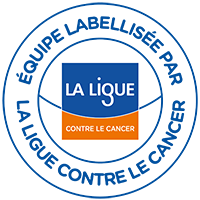Publish at
Presentation
The laboratory of Hematology of Imagine Institute covers several aspects of the physiopathology and treatment of malignant and benign hematologic disorders. The Lab belongs to INSERM U 1163/ CNRS ERL 8254 research units and is associated to the Necker Hospital clinical hematological department of hematology as well as to national reference centers for mastocytosis (CEREMAST), immunodeficiencies (CEREDIH) and hemoglobinopathies.
Our group has as major objectives:
- the characterization of mechanisms governing the physiopathology of hematological disorders;
- the development of therapeutic strategies to treat these diseases;
- the development of clinical research
- technology transfer.
We work in close collaboration with the Necker pathology, biology, cytogenetics, molecular biology, biotherapy, infectious disease, transplantation and pediatric immune hematology departments.
Erythropoiesis regulation and its clinical applications
Our research group has been working from the last years in erythropoiesis and erythropoietic disorders. We were particularly interested in the molecular mechanisms involved in the positive and negative regulation of erythropoiesis and how alterations in this system impacts in hematopoietic disorders. We have shown that caspases activation is critical for erythroid differentiation.
Our current aims are:
- to decipher the mechanisms triggering caspase activation;
- to identify parameters that control caspase activity, the downstream caspase targets;
- to characterize the involvement of caspases and protrins that regulates their functions, particularly HSP70, in the physiopathology of erythroid disorders such as thalassemia, myelodysplastic syndrome (MDS) and congenital erythroblastopenia;
- to determine the potential therapeutic application of caspases targeting in erythropoiesis disorders.
In Thalssemia we have identified that member of the TGF-bêta family are key regulators of ineffective erythropoiesis of thalassemia. We are currently deciphering the molecular and cellular mechanisms involved with these cytokines in the induction of ineffective eryhtropoiesis, developing therapeutic strategies by using inhibitors and extending our findings in several hematological disorders. We have shown that transferrin receptor (TfR1) is a signaling competent molecule able to regulate erythropoiesis independently of its essential role in iron transport. We are currently characterizing the molecular pathways involved in this process. We have developed TfR1 mutants in the intracytoplasmic tail of the receptor that will be used to identify molecular partners, which could be involved in the first steps of cell activation. Our goal is to identify the role of such molecular pathways in erythropoiesis as well as in other hematological disorders.
TfR1 is overexpressed in cancer cells compared to their non-malignant counterparts and several studies have suggested the therapeutic potential of targeting this receptor in cancer. We are currently developing, in collaboration with the startup Inatherys (Ivan Moura and Olivier Hermine co-founders) an antibody directed against TfR1 to treat malignant diseases.
Recently we developed a new field of research on the role of serotonin in erythropoiesis and red blood cells survival. To define the in vivo action of serotonin (5-hydroxytryptamine, 5-HT) we generated mice with a deletion of the gene encoding tryptophan hydroxylase-1 (Tph1). Our findings revealed that 5-HT is of pivotal importance to normal erythropoiesis and red blood cell (RBC) survival in mice. We will investigate mechanisms of 5-HT regulation and mechanisms of action of serotonin on erythroid differentiation, survival and proliferation as well as in iron metabolism. We will particularly give attention in the study of protein serotonylation, the modulation of ROS responses and the production of members of the TGF-beta; family. We will also investigate whether serotonin expression plays a role in erythroid disorders including thalassemia, MDS and primary myelofibrosis (MF) since our preliminary data suggest that old Tph1-/- mice develop MF. This work might be the basis of new therapeutic tools in erythroid disorders. In parallel we are currently investigating the role of serotonin in red blood cell preservation for blood transfusion.
Red blood cell transfusion is widely used in the management of different disorders. However its impact on the outcome of such diseases is poorly known. We are currently studying the role of red blood cells transfusions in cancer and immune diseases progression.
The physiopathology and treatment of virus-related lymphoproliferation and lymphoproliferation occurring in patients with immunodeficiencies
Our group is also interested in the development of novel targeted therapies for virus-associated lymphoproliferation in general and lymphoproliferation associated with human T-lymphotropic virus type 1 (HTLV-1) and hepatitis C virus (HCV) infections in particular. We are searching to identify the molecular mechanisms involved in the physiopathology of these diseases and developing strategies to take advantage of pathways involved in virus infection to kill tumor cells to avoid the need of chemotherapy treatment. In collaboration with L. Abel’s group, we have started a collaboration to determine the genetic basis that lead to lymphoproliferation following HCV and HTLV-1 infections.
Another field of investigation concerns our previous observation that Neuropilin-1 (NRP-1, a protein involved in the neurological synapse) plays a critical role in HTLV-1 entry. We are currently trying to understand if NRP-1 could contribute to aspects of the pathology of diseases related to HTLV-1 infection (i.e. lymphoproliferation, immunodeficiency and autoimmune diseases). We are currently investigating the role of NRP-1 ligands in these processes.
Mastocytosis and role of mast cells in disease
Mastocytosis is a rare disease caused by the accumulation of mast cells in various tissues. The pediatric form of mastocytosis is a clonal disease associated with mutations of the C-Kit gene and may resolve spontaneously. C-Kit mutations differed between adults and pediatric patients suggesting that different mutations could dictate the outcome of the disease. We are currently trying to understand how these mutations may explain the phenotype and the disease outcome and how they can be targeted to treat what is still an incurable disease in adult patients.
Mastocytosis is a frequent disease in dogs. We have identified canine C-kit mutations and shown that they are similar to those found in pediatric diseases. In collaboration with a pharmaceutical company (AB Science, Oliver Hermine co-founder) we have demonstrated that kinase inhibitors that block KIT may reduce mast cell infiltration and the symptoms associated with mast cells mediators release in dogs. Clinical trials are now running in humans mastocytosis by using kinase inhibitors.
Mast cells may play a critical role in various inflammatory, neurological and neoplastic diseases, and that these diseases can be targeted by kinase inhibitors targeting mast cells. We will use as a model naturally occurring neoplastic and inflammatory diseases in dogs to test this hypothesis.
Physiopathology of graft versus host disease in allogeneic bone marrow transplantation
Following the immune reconstitution after bone marrow transplantation in human, we have shown that complement and cells of innate immunity including natural killer T cells, myeloid regulatory cells are important determinants of graft versus host disease (GVHD). We are developing murine and humanized murine models of allogeneic bone marrow transplantation to target complement and the afore-mentioned cells, in order to assess their impact on GVHD and graft versus leukemia (GVL). This work will serve as the basis for novel biotherapies for preventing GVHD without impairing GVL.
Team
-

-
 ThiagoTrovati MacielResearcher (CR1-INSERM) - Theme Leader on "Erythropoiesis and Red Blood Cell Disorders"
ThiagoTrovati MacielResearcher (CR1-INSERM) - Theme Leader on "Erythropoiesis and Red Blood Cell Disorders" -

-

-
-

-

-
-
-
-
-
-

-

-
-
-
-
-
-
-
-
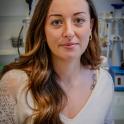
-
-
-
-
-
-
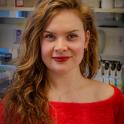
-
-
-
-
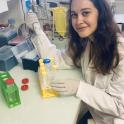
-
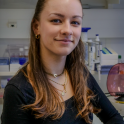
-
-
-
-
-

-

-
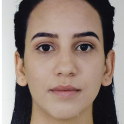
-
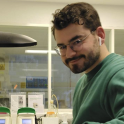
-
-
Resources & publications
-
 2020Journal (source)Leukemia
2020Journal (source)LeukemiaTargeted deep sequencing reveals clonal and subclonal mutational signatures i...
-
 2020Journal (source)Haematologica
2020Journal (source)HaematologicaInnate immune cells, major actors of sickle cell disease pathophysiology.
-
 2020Journal (source)Front Microbiol
2020Journal (source)Front MicrobiolNovel Treatments of Adult T Cell Leukemia Lymphoma.
-
 2019Journal (source)Cell Rep
2019Journal (source)Cell RepEnhanced Renewal of Erythroid Progenitors in Myelodysplastic Anemia by Periph...
-
 2019Journal (source)Haematologica
2019Journal (source)HaematologicaXPO1 regulates erythroid differentiation and is a new target for the treatmen...
-
 2019Journal (source)Haematologica
2019Journal (source)HaematologicaA novel, highly potent and selective phosphodiesterase-9 inhibitor for the tr...
-
 2019Journal (source)Front Immunol
2019Journal (source)Front ImmunolLessons to Learn From Low-Dose Cyclosporin-A: A New Approach for Unexpected C...
-
 2019Journal (source)F1000Res
2019Journal (source)F1000ResRecent advances in the understanding and therapeutic management of mastocytosis.
-
 Journal (source)J Allergy Clin Immunol Pract
Journal (source)J Allergy Clin Immunol PractNeuroinflammatory disorders and mastocytosis: A possible association?


